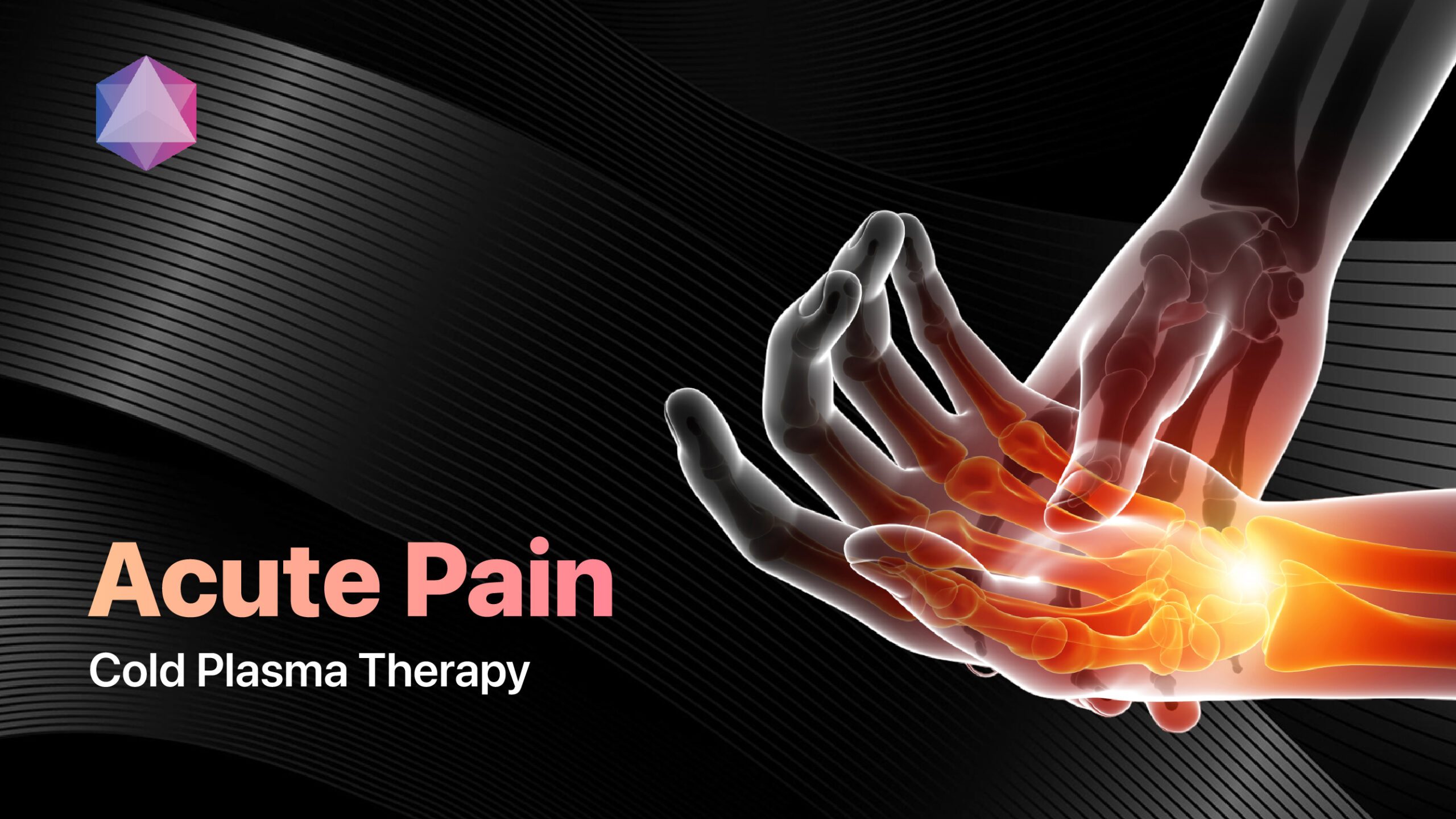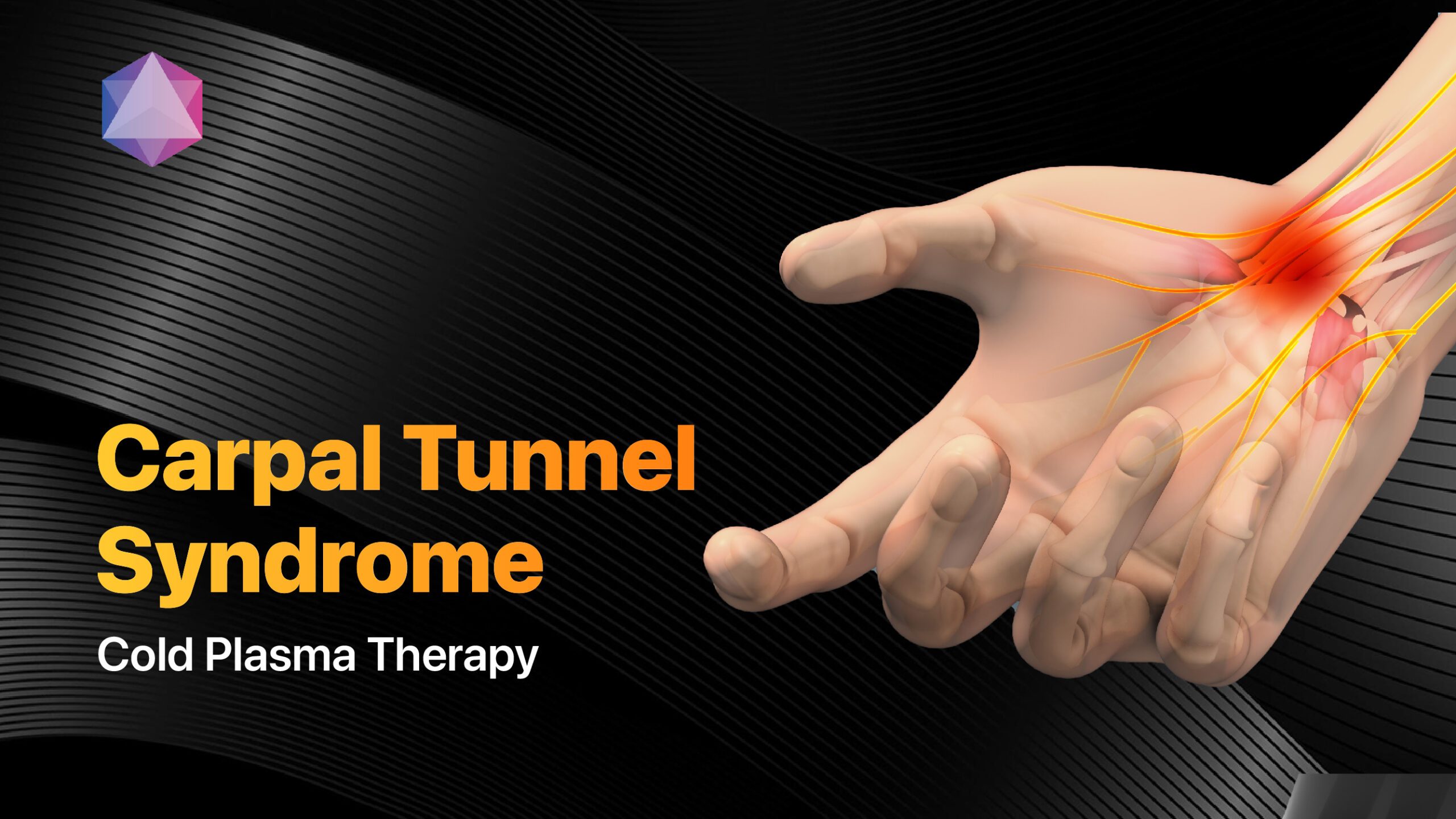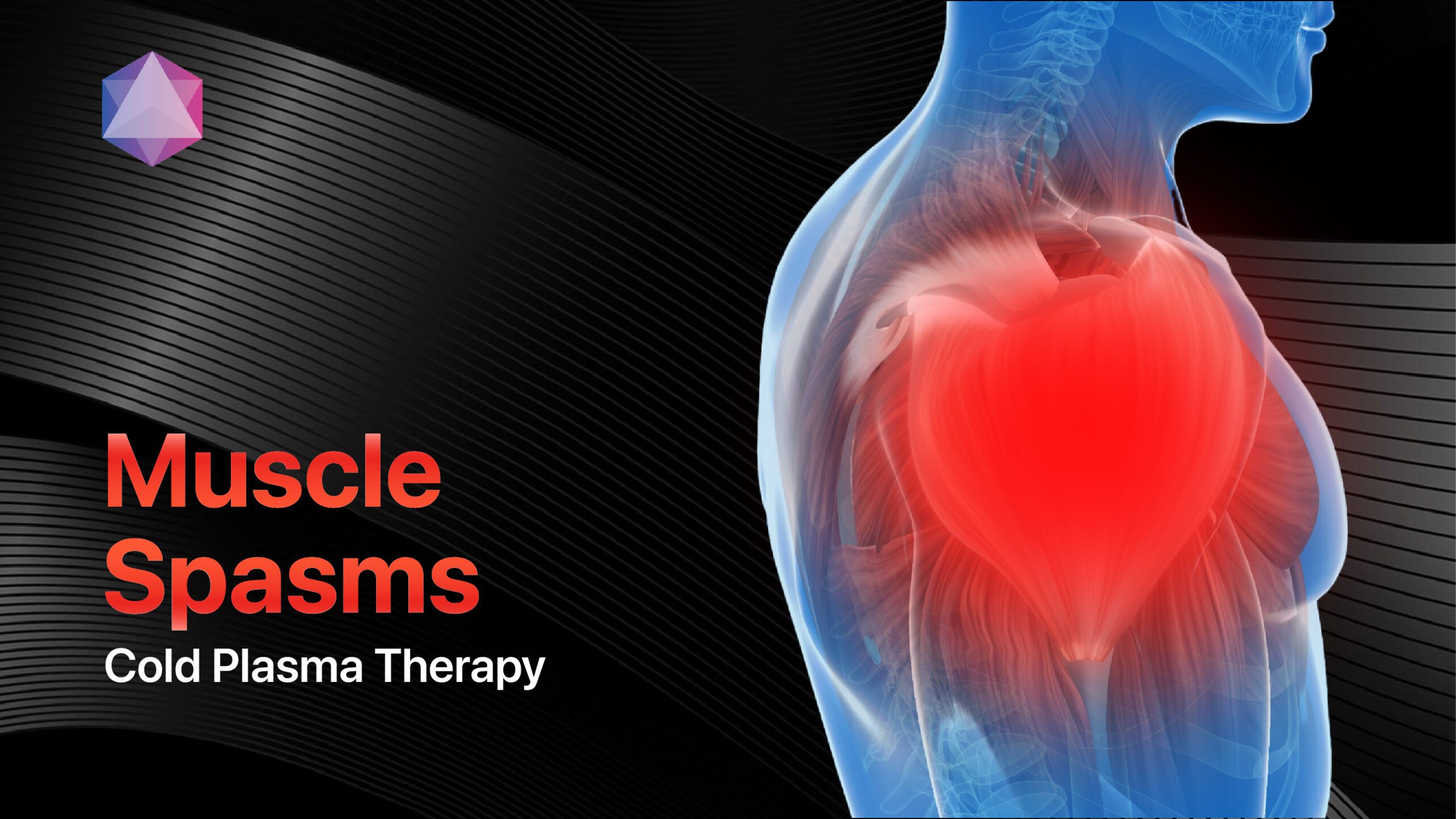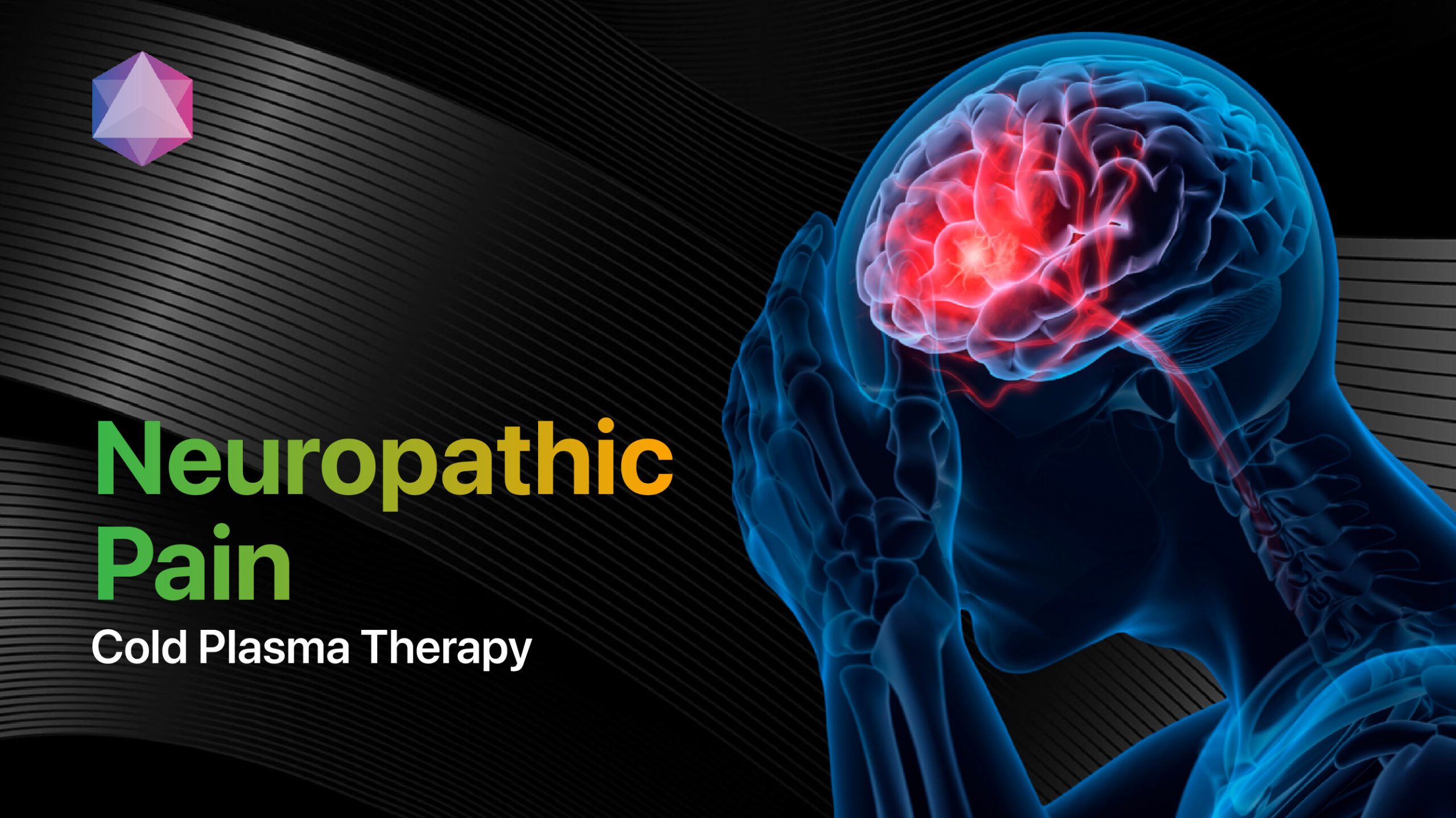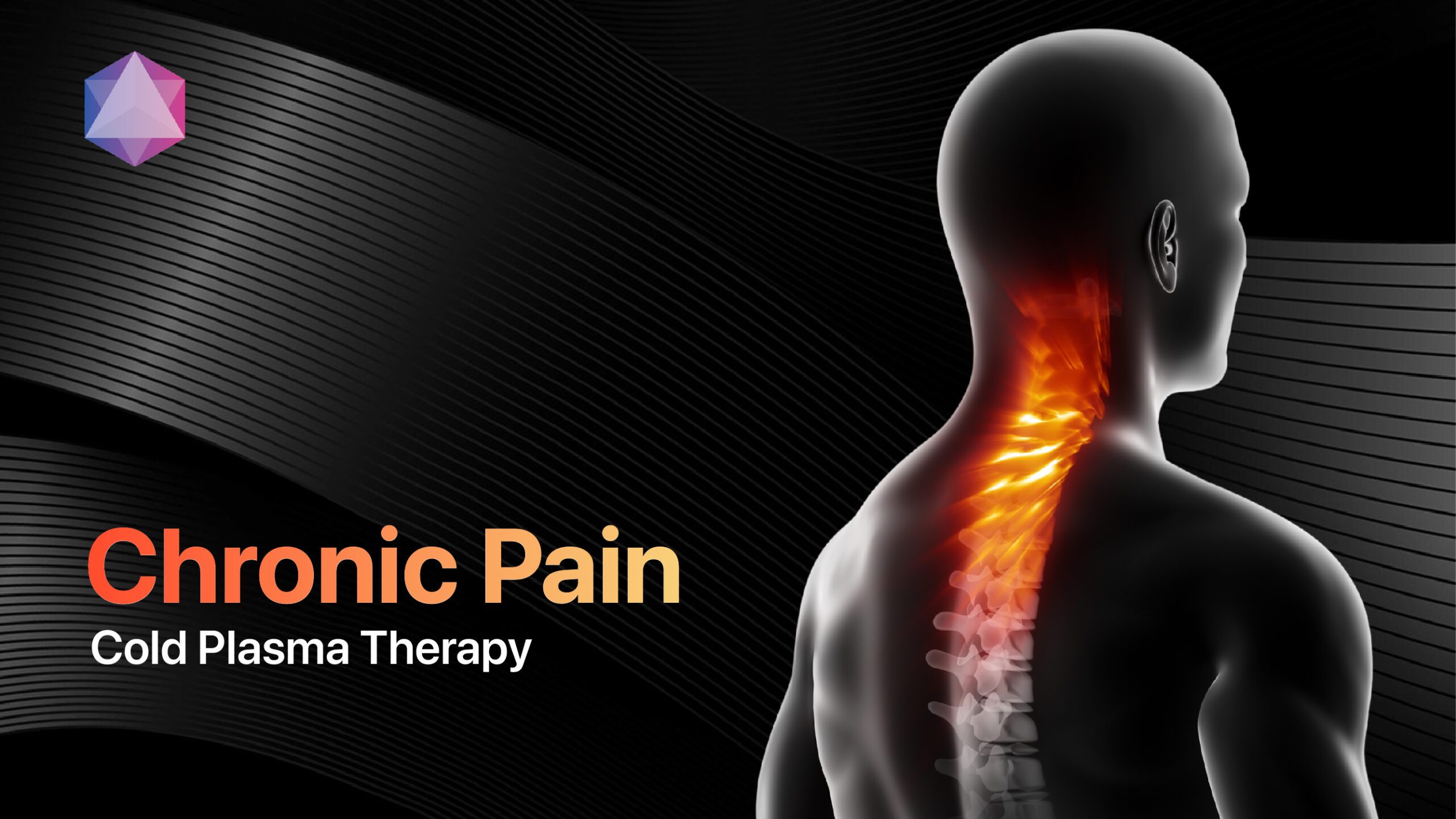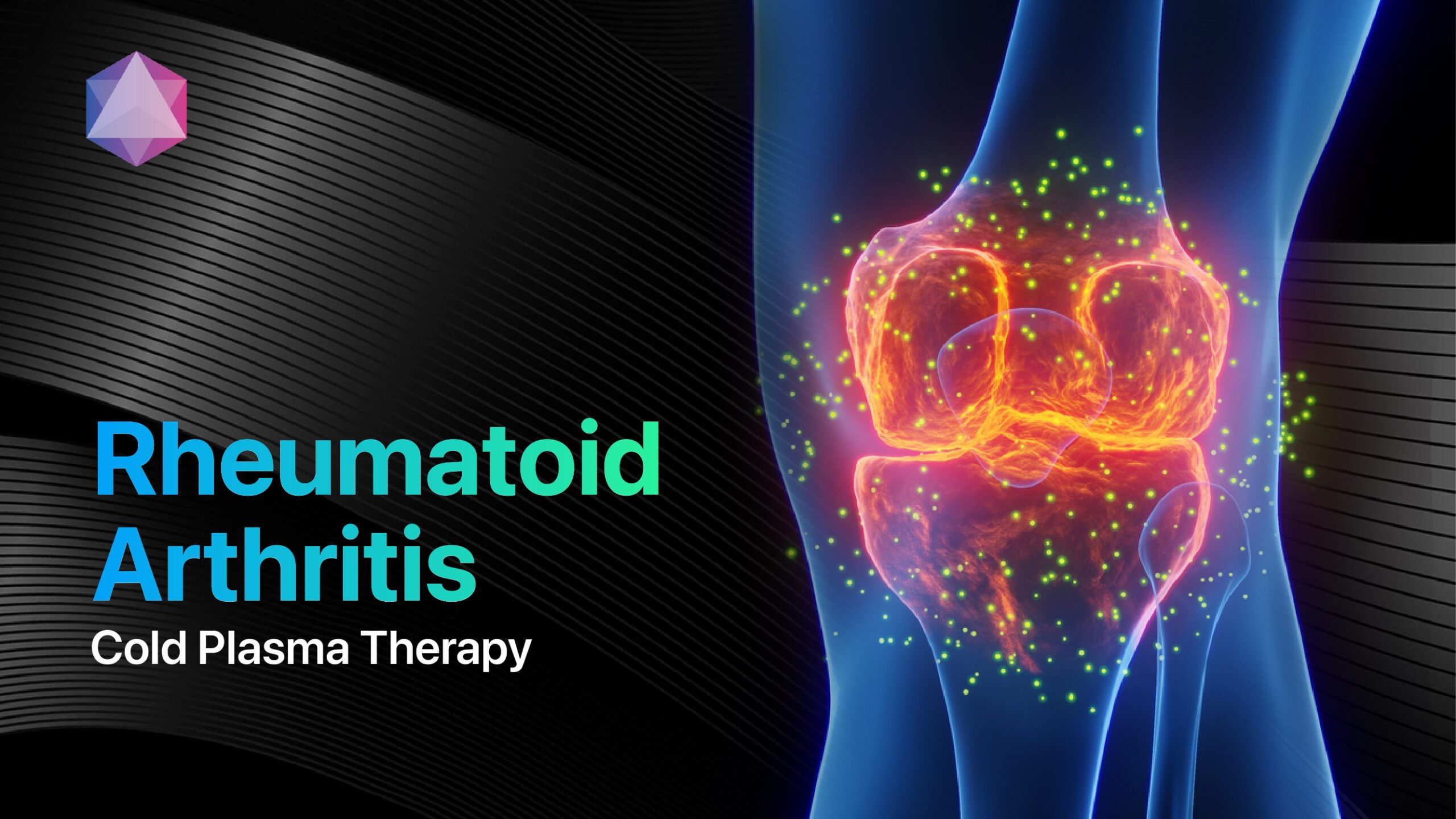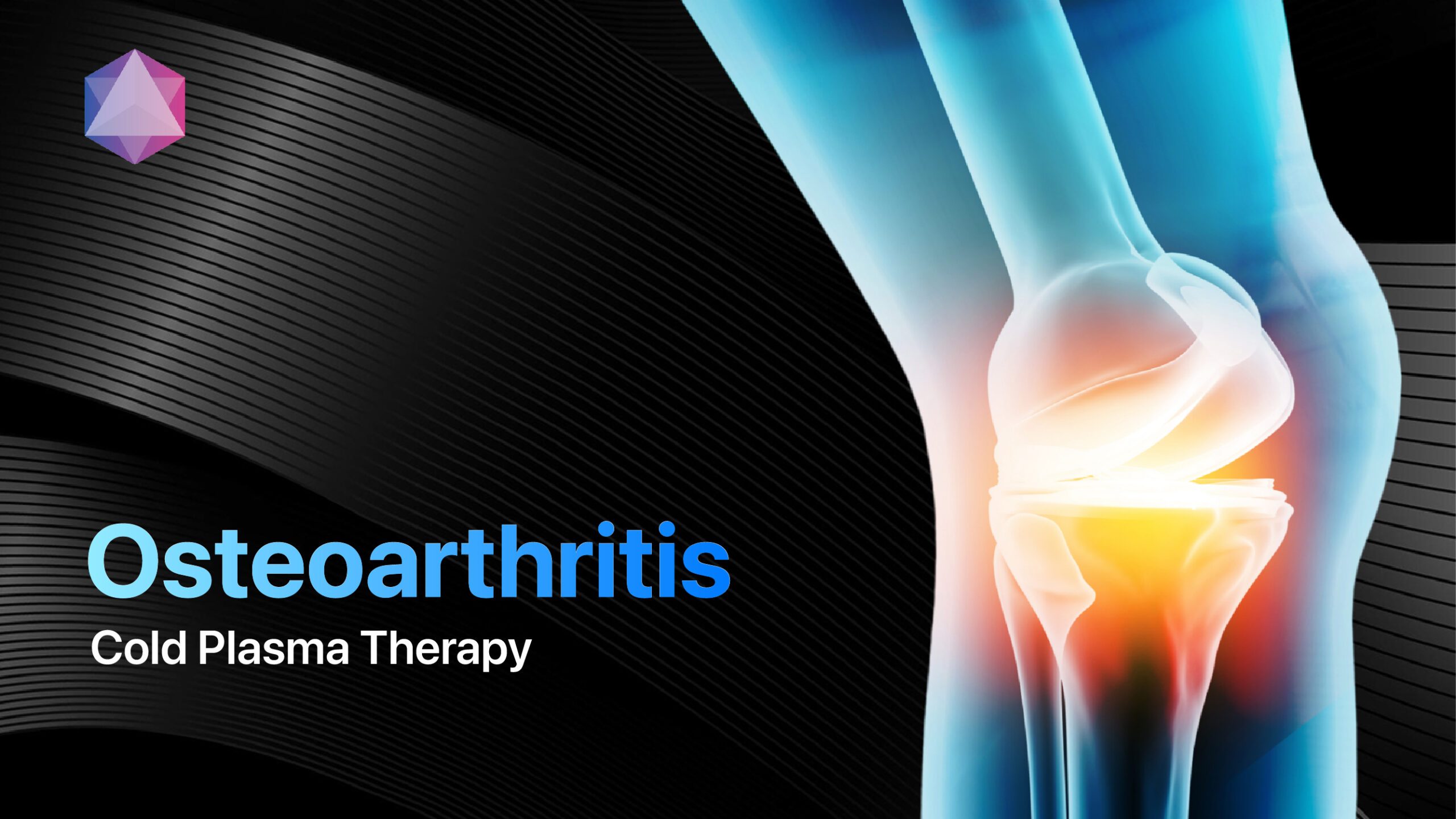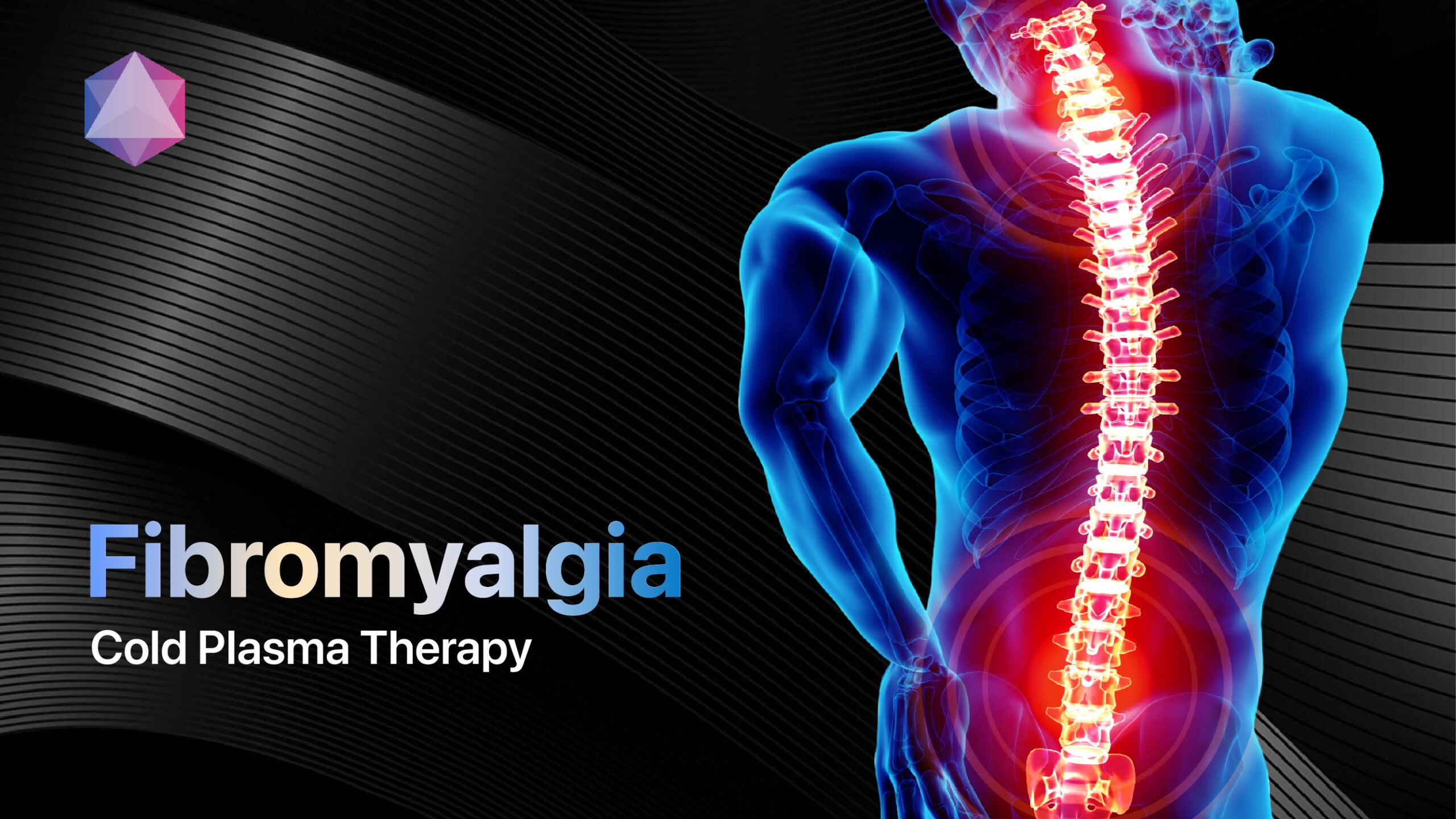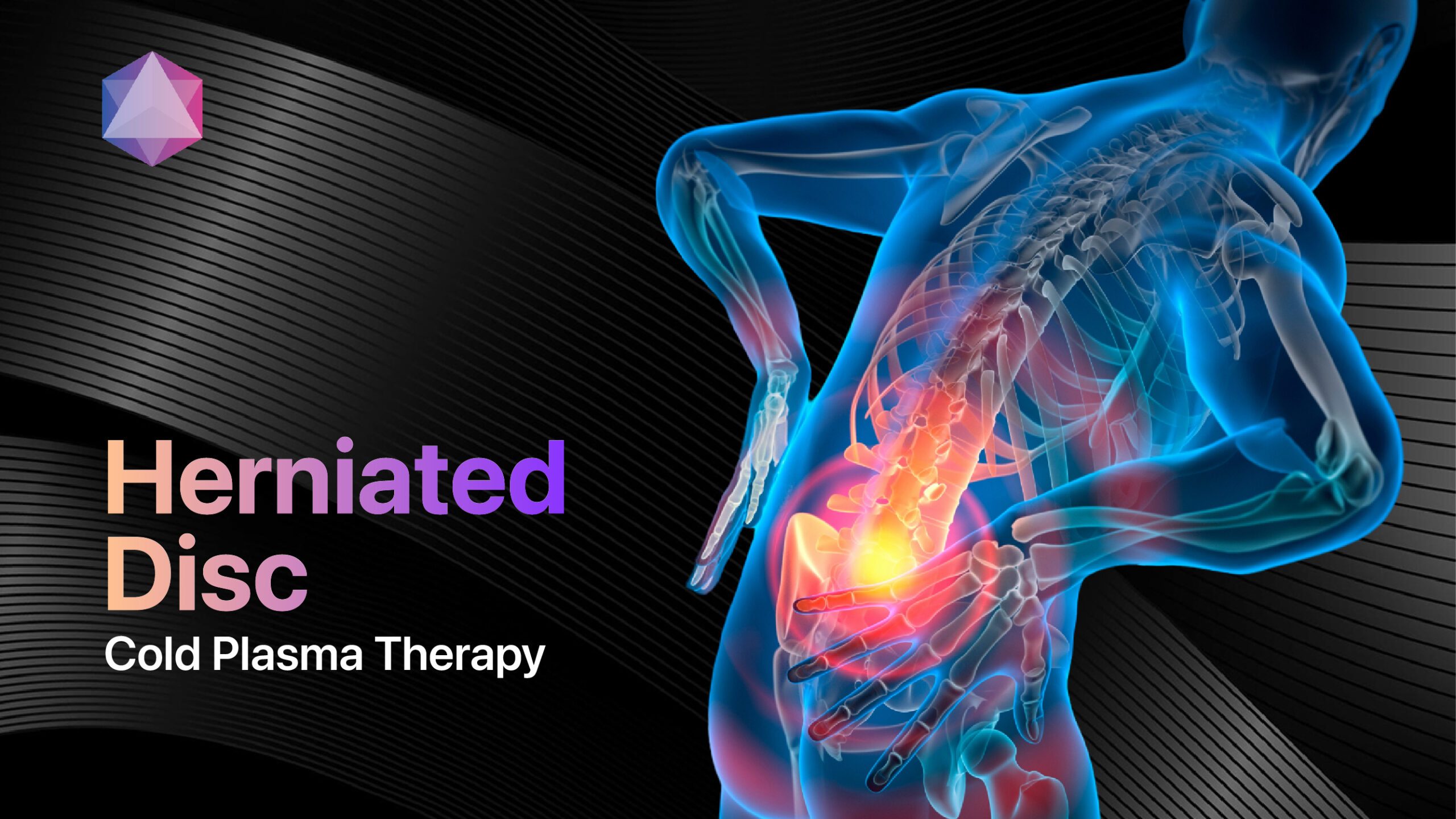
Imagine a condition that affects millions worldwide, causing debilitating pain, numbness, and weakness. This is the reality for those suffering from herniated discs, a common spinal disorder that can significantly impact quality of life[2]. But what if there was a cutting-edge treatment that could provide lasting relief without invasive surgery? Enter Mirari Cold Plasma, a groundbreaking technology developed by General Vibronics that harnesses the power of nitric oxide (NO)[1][3]. In this comprehensive guide, we’ll dive deep into the world of herniated discs and explore how Mirari Cold Plasma is revolutionizing patient care[4].
1. Definition of Herniated Disc
What is a Herniated Disc?
A herniated disc, also known as a slipped or ruptured disc, occurs when the soft, gel-like center (nucleus pulposus) of a spinal disc pushes through a tear in the tough, outer layer (annulus fibrosus). This protrusion can press on nearby nerves, causing pain, numbness, and weakness in the affected area and extremities[2].
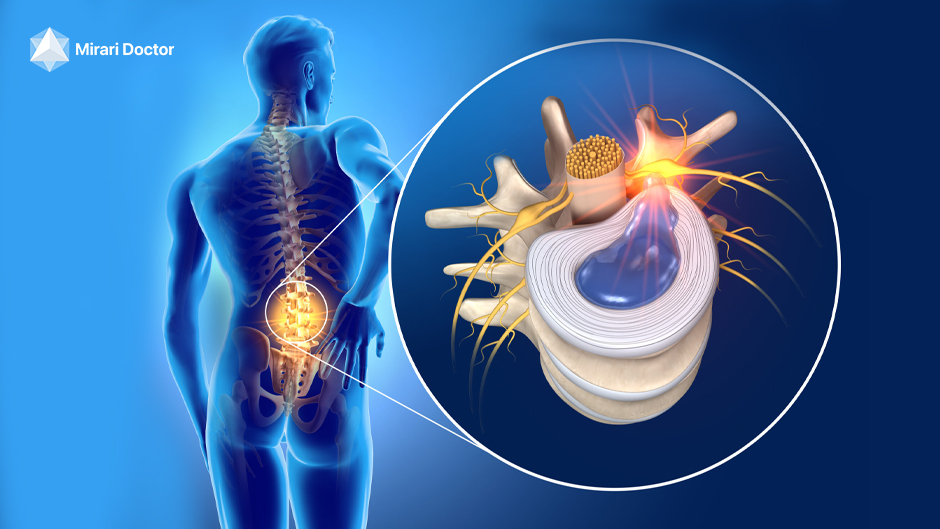
A herniated disc is when the disc’s center pushes out, pressing on nerves and causing pain.
Anatomy of Intervertebral Discs
To understand herniated discs, it’s essential to know the anatomy of intervertebral discs. These discs sit between the vertebrae of the spine, acting as shock absorbers and allowing for flexibility. Each disc consists of two main parts:
- The annulus fibrosus: A tough, outer layer made of collagen fibers
- The nucleus pulposus: A soft, gel-like center that provides cushioning
As we age, our discs naturally lose moisture and become less flexible, making them more susceptible to damage and herniation[2].
Types of Herniated Discs
Herniated discs can be classified based on the extent of the protrusion:
- Protrusion: The nucleus pulposus bulges out but remains contained within the annulus fibrosus.
- Extrusion: The nucleus pulposus breaks through the annulus fibrosus but remains connected to the disc.
- Sequestration: A piece of the nucleus pulposus completely separates from the disc and may migrate into the spinal canal[2].
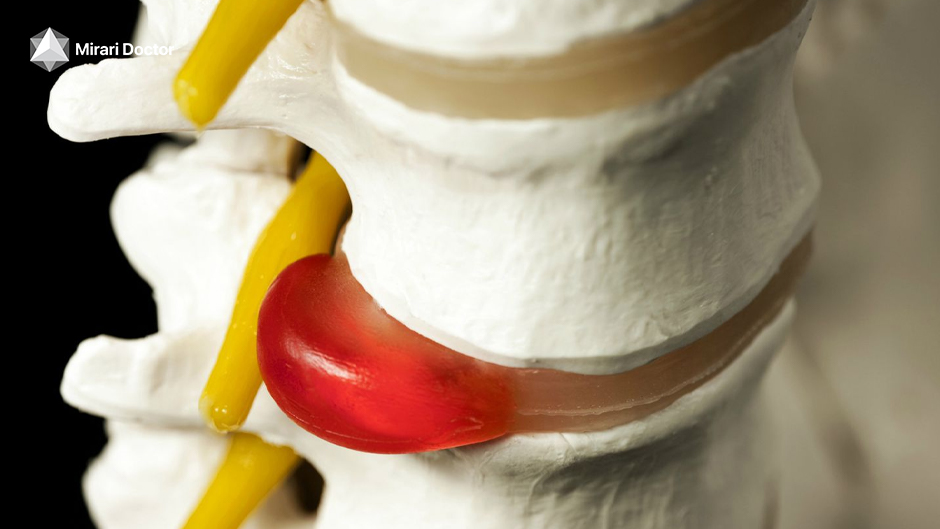
Sequestration is when a part of the disc’s nucleus detaches and moves into the spinal canal.
Common Locations of Herniated Discs
Herniated discs most commonly occur in the lower back (lumbar spine) and neck (cervical spine). The lumbar spine bears the most weight and is subject to the greatest amount of stress, making it particularly vulnerable to disc herniation. Cervical disc herniations are less common but can cause significant pain and disability in the neck, shoulders, and arms[2].
How Herniated Discs Affect Nerves
When a disc herniates, it can compress or irritate nearby spinal nerves. This compression can lead to inflammation, pain, numbness, and weakness in the area supplied by the affected nerve. In the lumbar spine, a herniated disc can compress the sciatic nerve, causing radiating pain down the leg known as sciatica[2].
2. Causes of Herniated Discs
 |
Age-Related DegenerationOne of the primary causes of herniated discs is age-related degeneration. As we age, our spinal discs lose moisture and elasticity, making them more prone to damage and herniation. This natural wear and tear is called disc degeneration and is a common part of the aging process[7]. |
 |
Traumatic InjuriesTraumatic injuries, such as those sustained in car accidents, falls, or sports-related incidents, can cause herniated discs. These injuries can tear the annulus fibrosus, allowing the nucleus pulposus to protrude and compress nearby nerves[6]. |
 |
Poor Posture and ErgonomicsPoor posture and ergonomics can place excessive stress on the spine, leading to disc herniation over time. Sitting for long periods, especially with poor posture, can cause the discs to compress unevenly, increasing the risk of herniation. Improper lifting techniques, such as bending at the waist instead of the knees, can also contribute to disc damage[5]. |
 |
Obesity and Its ImpactBeing overweight or obese can significantly increase the risk of developing a herniated disc. Excess body weight places added stress on the spine, particularly the lumbar region, which can accelerate disc degeneration and make herniation more likely. Maintaining a healthy weight through diet and exercise is crucial for preventing herniated discs and promoting overall spinal health[8]. |
 |
Repetitive Strain and OveruseRepetitive strain and overuse can also contribute to the development of herniated discs. Jobs or activities that involve repetitive bending, twisting, or lifting can place excessive stress on the spine over time, leading to disc damage and herniation. It’s essential to use proper body mechanics and take frequent breaks to reduce the risk of overuse injuries[6]. |
3. Symptoms of Herniated Discs
 |
Pain CharacteristicsThe pain associated with a herniated disc can vary depending on the location and severity of the herniation. Common pain characteristics include: |
 |
Numbness and TinglingHerniated discs can compress spinal nerves, causing numbness and tingling sensations in the affected area and extremities. This can feel like pins and needles or a loss of sensation in the skin. Numbness and tingling are often accompanied by pain and can be indicative of nerve compression[10]. |
 |
Muscle WeaknessNerve compression from a herniated disc can also lead to muscle weakness in the affected area. This weakness may make it difficult to perform everyday tasks, such as lifting objects or walking. In severe cases, muscle weakness can lead to foot drop, a condition where the front part of the foot drags on the ground when walking[10]. |
 |
Sciatica SymptomsSciatica is a common symptom of a lumbar herniated disc. It occurs when the herniated disc compresses the sciatic nerve, causing radiating pain, numbness, and weakness in the buttocks, legs, and feet. Sciatica pain is often described as sharp, shooting, or burning and can be severe enough to limit mobility[10][11]. |
Symptoms Based on Location (Cervical vs. Lumbar)
The symptoms of a herniated disc can vary depending on the location of the herniation. Cervical herniated discs can cause:
- Pain, numbness, and weakness in the neck, shoulders, arms, and hands[10]
- Headaches, particularly at the base of the skull[10]
- Difficulty turning the head or neck[10]
Lumbar herniated discs can cause:
- Pain, numbness, and weakness in the lower back, buttocks, legs, and feet[10]
- Sciatica symptoms[10]
- Difficulty standing, walking, or sitting for long periods[10]
4. Diagnosis of Herniated Discs
Medical History and Physical Examination
Diagnosing a herniated disc begins with a thorough medical history and physical examination. Your healthcare provider will ask about your symptoms, including when they started, what makes them better or worse, and how they impact your daily life. They will also perform a physical exam, checking for:
- Tenderness in the affected area[11]
- Range of motion limitations[11]
- Strength and reflexes in the extremities[11]
- Sensory changes, such as numbness or tingling[11]

Diagnosing a herniated disc starts with a medical history and physical exam.
Imaging Techniques (MRI, CT, X-Ray)
Imaging techniques play a crucial role in diagnosing herniated discs. The most common imaging tests include:
- Magnetic Resonance Imaging (MRI): MRI uses a strong magnetic field and radio waves to create detailed images of the spine and soft tissues. It is the gold standard for diagnosing herniated discs and can show the location and extent of the herniation[12].
- Computed Tomography (CT) Scan: CT scans use X-rays to create cross-sectional images of the spine. While not as detailed as MRI, CT scans can help visualize bony structures and may be used if an MRI is not available or contraindicated[13].
- X-Ray: X-rays use electromagnetic radiation to create images of the spine’s bony structures. While X-rays cannot directly visualize herniated discs, they can help rule out other conditions, such as fractures or degenerative changes[13].
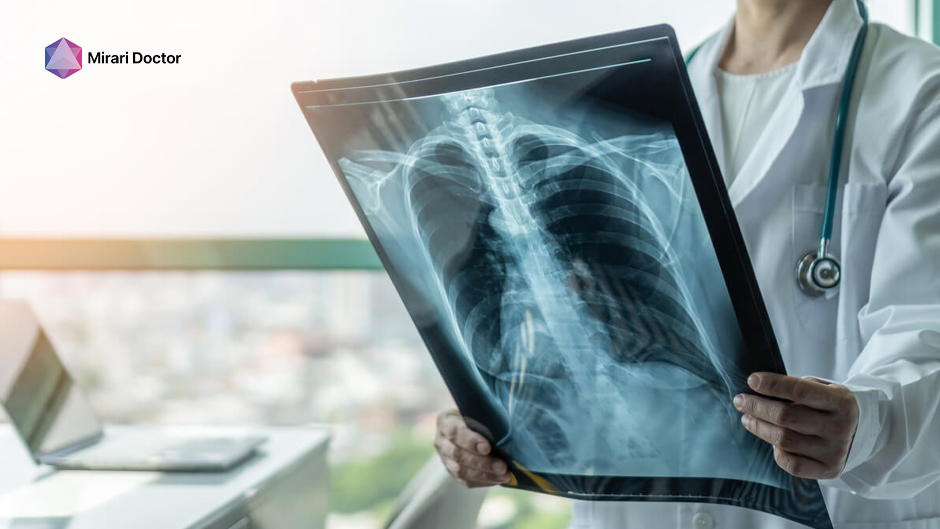
Imaging techniques are essential for diagnosing herniated discs.
Neurophysiological Testing
In some cases, neurophysiological testing may be used to assess nerve function and determine the extent of nerve compression. These tests include:
- Electromyography (EMG): EMG measures the electrical activity of muscles and can help determine if nerve compression is causing muscle weakness or dysfunction[14].
- Nerve Conduction Studies (NCS): NCS measures how quickly electrical signals travel through nerves and can help identify areas of nerve compression or damage[14].
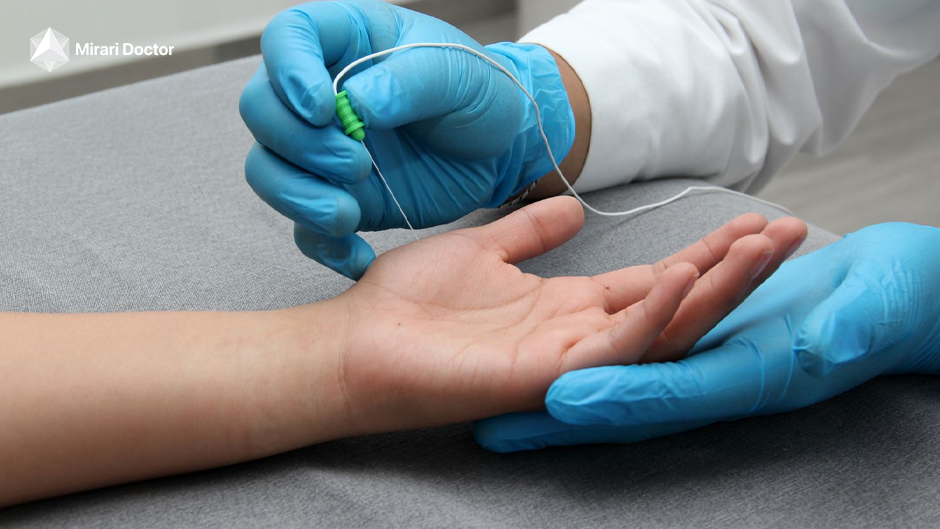
Neurophysiological testing can assess nerve function and the extent of nerve compression.
Importance of Differential Diagnosis
Differential diagnosis is essential when evaluating a patient with suspected herniated disc symptoms. Many conditions can mimic the symptoms of a herniated disc, including:
- Spinal stenosis[7]
- Degenerative disc disease[7]
- Facet joint arthritis[7]
- Muscle strains or sprains[7]
- Peripheral neuropathy[7]
Accurately identifying the underlying cause of a patient’s symptoms is crucial for developing an effective treatment plan[7].
Follow-up and Monitoring
Once a herniated disc has been diagnosed, follow-up and monitoring are essential to track the patient’s progress and adjust treatment as needed. Regular check-ins with a healthcare provider can help ensure that the patient is responding well to treatment and that their symptoms are improving. If symptoms persist or worsen, additional imaging or testing may be necessary to reassess the condition[12].

Follow-up and monitoring are crucial for managing a herniated disc.
5. Treatment Options for Herniated Discs
Conservative Treatment Options
Physical Therapy and Rehabilitation
Physical therapy and rehabilitation are often the first lines of treatment for herniated discs. A physical therapist can develop a personalized treatment plan that may include:
- Stretching and strengthening exercises to improve flexibility and support the spine[15]
- Manual therapy techniques, such as massage or joint mobilization, to reduce pain and improve range of motion[15]
- Postural education and ergonomic training to reduce stress on the spine[15]
- Modalities, such as heat, ice, or electrical stimulation, to manage pain and inflammation[15]

Physical Therapy and Rehabilitation are often the first treatment for herniated discs.
Medications for Pain Management
Medications can be used to manage pain and inflammation associated with herniated discs. Common medications include:
- Over-the-counter pain relievers, such as acetaminophen or ibuprofen[15]
- Nonsteroidal anti-inflammatory drugs (NSAIDs) to reduce inflammation[15]
- Muscle relaxants to reduce muscle spasms and pain[15]
- Prescription opioids for severe pain (used sparingly and under close medical supervision)[15]

Medications help manage pain and inflammation from herniated discs.
Lifestyle Modifications and Prevention
Lifestyle modifications and prevention strategies can help manage herniated disc symptoms and reduce the risk of future herniations. These may include:
- Maintaining a healthy weight to reduce stress on the spine[15]
- Practicing good posture and ergonomics, especially when sitting or lifting[15]
- Engaging in regular low-impact exercise, such as walking or swimming, to maintain flexibility and strength[15]
- Quitting smoking, as smoking can accelerate disc degeneration and impair healing[15]

Lifestyle changes help manage and prevent herniated disc symptoms.
Emerging Therapies
Stem Cell Therapy
Stem cell therapy is an emerging treatment option for herniated discs that aims to promote tissue regeneration and repair. This therapy involves injecting stem cells, which have the ability to differentiate into various cell types, into the damaged disc. While still considered experimental, early studies have shown promising results in reducing pain and improving function in patients with herniated discs[16].
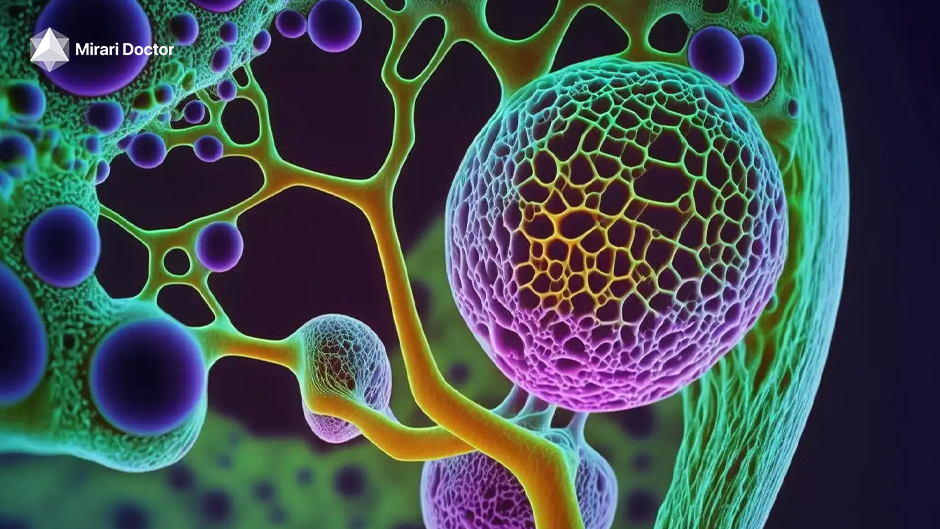
Stem cell therapy for herniated discs involves injecting stem cells to promote tissue regeneration and repair.
Platelet-Rich Plasma (PRP) Injections
Platelet-rich plasma (PRP) injections are another emerging therapy for herniated discs. PRP is derived from the patient’s own blood and contains a high concentration of growth factors and other bioactive molecules that can promote healing and tissue repair. PRP injections are typically performed under ultrasound guidance and have shown potential in reducing pain and improving function in patients with herniated discs[16].
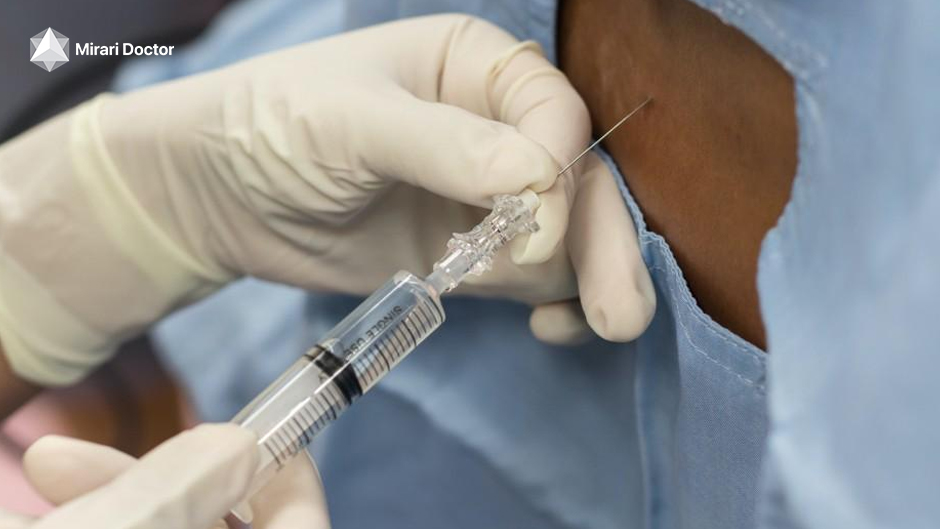
PRP injections use growth factors from the patient’s blood to aid healing in herniated discs.
Cold Plasma Therapy
Cold plasma therapy, specifically Mirari Cold Plasma developed by General Vibronics, is a cutting-edge treatment option for herniated discs that harnesses the power of nitric oxide (NO). Unlike other cold plasma devices that focus on generating reactive oxygen and nitrogen species (RONS), Mirari Cold Plasma specifically targets NO for its therapeutic potential[17].
Mechanism of Action in Herniated Disc Treatment: Nitric oxide plays a crucial role in many biological processes, including vasodilation, inflammation regulation, and tissue regeneration. By delivering precise and consistent doses of NO to the affected area, Mirari Cold Plasma aims to:
- Reduce inflammation and pain associated with herniated discs[17]
- Promote tissue repair and regeneration[17]
- Improve blood flow and nutrient delivery to the damaged disc[17]
- Minimize potential side effects associated with excessive RONS levels[17]
Potential Benefits and Limitations: Mirari Cold Plasma offers a non-invasive, targeted approach to treating herniated discs. The handheld device allows for easy, precise application of NO to the affected area, making it accessible to healthcare professionals with minimal training. While early studies have shown promising results in reducing pain and improving function, more research is needed to fully understand the long-term effects and optimal treatment protocols for cold plasma therapy in herniated disc management[17].
Current Research and Future Directions: As a relatively new technology, cold plasma therapy for herniated discs is an active area of research. Ongoing studies aim to:
- Elucidate the precise mechanisms by which NO promotes disc healing and regeneration[17]
- Optimize treatment parameters, such as dosage, frequency, and duration[17]
- Evaluate the efficacy of cold plasma therapy in combination with other conservative treatments[17]
- Assess long-term outcomes and potential for preventing future herniations[17]
As more evidence emerges, cold plasma therapy, particularly Mirari Cold Plasma, may become an increasingly valuable tool in the management of herniated discs, offering patients a safe, effective, and non-invasive treatment option[17].
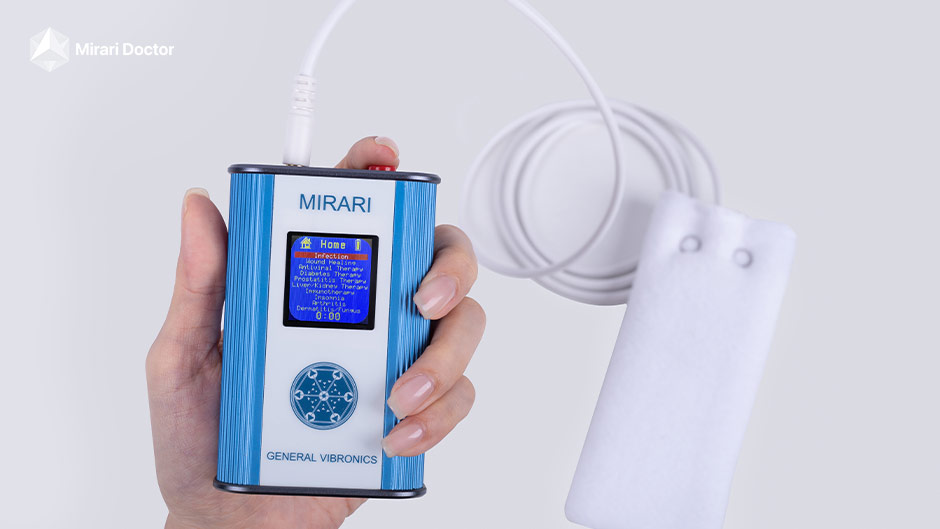
Mirari Cold Plasma uses nitric oxide for advanced herniated disc treatment.
Surgical Interventions
Indications for Surgery
While conservative treatments are often effective in managing herniated disc symptoms, surgery may be necessary in certain cases. Indications for surgery include:
- Severe pain or neurological deficits that do not respond to conservative treatment[9]
- Progressive muscle weakness or paralysis[9]
- Bowel or bladder dysfunction (cauda equina syndrome)[9]
- Significant disability or inability to perform daily activities[9]
Types of Surgical Procedures
The most common surgical procedures for herniated discs include:
- Microdiscectomy: A minimally invasive procedure that involves removing the herniated portion of the disc to relieve nerve compression[9].
- Laminectomy: A procedure that involves removing a portion of the vertebral bone (lamina) to create more space for the spinal nerves and relieve compression[9].
- Spinal Fusion: A procedure that involves fusing two or more vertebrae together to stabilize the spine and reduce pain. This is typically reserved for cases with significant instability or degeneration[9].
Post-Surgical Rehabilitation
Post-surgical rehabilitation is crucial for optimizing recovery and long-term outcomes after herniated disc surgery. A comprehensive rehabilitation program may include:
- Pain management techniques, such as medication or cold therapy[15]
- Gradual progression of physical activity and exercise to improve strength and flexibility[15]
- Postural education and ergonomic training to reduce stress on the spine[15]
- Lifestyle modifications, such as weight management and smoking cessation[15]
Close collaboration between the patient, surgeon, and rehabilitation team is essential for ensuring a successful recovery and minimizing the risk of future herniations[15].

Post-surgical rehabilitation is essential for recovery after herniated disc surgery.
6. Recovery and Prognosis
Timeline for Healing
The timeline for healing after a herniated disc varies depending on the severity of the herniation, the chosen treatment approach, and individual factors such as age and overall health. In general:
- Conservative treatment: Most patients experience significant improvement in symptoms within 4-6 weeks of starting conservative treatment. Complete recovery may take several months[18].
- Surgical treatment: Recovery after herniated disc surgery typically takes 4-6 weeks, with gradual improvement in symptoms over several months. Most patients can return to normal activities within 2-3 months[18].
Short-term vs. Long-term Recovery
Role of Cold Plasma Therapy in Enhancing Recovery
Cold plasma therapy, particularly Mirari Cold Plasma, may play a valuable role in enhancing both short-term and long-term recovery after a herniated disc. By specifically targeting nitric oxide (NO), Mirari Cold Plasma offers a non-invasive, localized treatment approach that can:
- Reduce inflammation and pain in the short-term, allowing for earlier initiation of rehabilitation and faster symptom relief[16]
- Promote tissue repair and regeneration in the long-term, potentially improving disc health and reducing the risk of future herniations[16]
- Provide a safe, well-tolerated treatment option that can be used in conjunction with other conservative therapies[16]
As research continues to evolve, the integration of cold plasma therapy into standard herniated disc treatment protocols may offer patients a more comprehensive, effective approach to managing their condition and optimizing long-term outcomes[16].
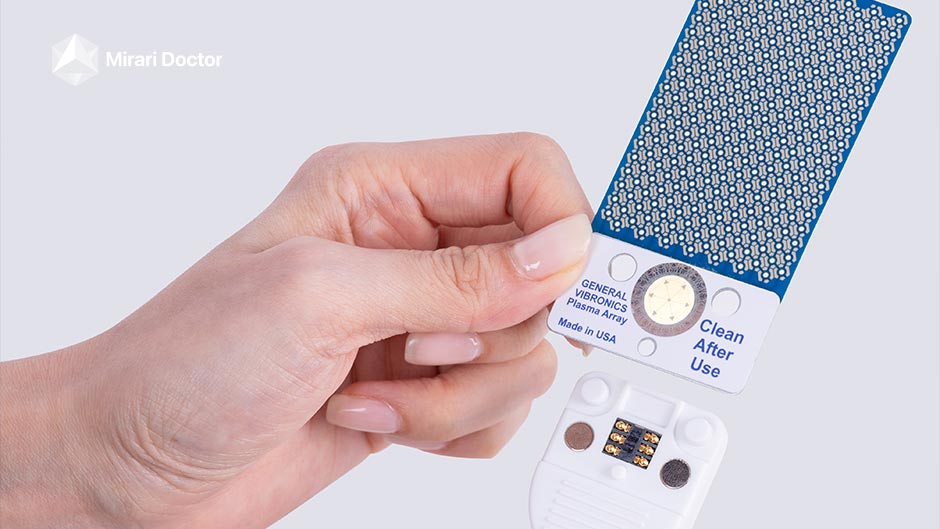
Mirari Cold Plasma therapy aids recovery by reducing pain and promoting tissue repair after herniated disc surgery.
Importance of Follow-up Care
Regular follow-up care is essential for monitoring recovery progress, adjusting treatment plans as needed, and identifying any potential complications early. Patients should maintain close communication with their healthcare team and report any new or worsening symptoms promptly[18].
Indicators of Successful Recovery
Indicators of successful recovery after a herniated disc include:
- Significant reduction in pain and other symptoms[18]
- Improved function and mobility in daily activities[18]
- Return to work or regular activities without significant limitations[18]
- Improved quality of life and overall well-being[18]
Risks of Non-Treatment and Complications
While most herniated discs resolve with conservative treatment, failing to seek appropriate care or adhere to treatment recommendations can lead to potential complications, such as:
- Chronic pain and disability[19]
- Progressive neurological deficits, such as weakness or numbness[19]
- Reduced quality of life and mental health concerns, such as depression or anxiety[19]
- In rare cases, cauda equina syndrome, a medical emergency that requires immediate surgical intervention[19]
Patients need to work closely with their healthcare team to develop an individualized treatment plan and follow through with recommended care to minimize the risk of complications and optimize long-term outcomes[19].

Neglecting treatment for a herniated disc can lead to pain, disability, and serious complications.
7. Future Directions in Herniated Disc Research
Advancements in Understanding Disc Degeneration
Research continues to unravel the complex mechanisms underlying disc degeneration, the primary risk factor for herniated discs. Advancements in understanding the cellular, molecular, and biomechanical processes involved in disc degeneration may lead to the development of new preventive strategies and targeted therapies[20].
Innovations in Diagnostic Imaging
Emerging imaging technologies, such as high-resolution MRI and quantitative MRI techniques, are providing new insights into the structure and composition of intervertebral discs. These advancements may allow for earlier detection of disc degeneration and more precise characterization of herniated discs, guiding personalized treatment approaches[21].
Novel Therapeutic Targets and Drug Development
As our understanding of the pathophysiology of herniated discs expands, researchers are identifying novel therapeutic targets and developing new pharmacological interventions. These may include:
- Drugs that target specific inflammatory pathways or pain receptors[22]
- Biologics, such as growth factors or cytokine inhibitors, that promote disc regeneration[20]
- Gene therapies that modulate the expression of key proteins involved in disc health[20]

New treatments for herniated discs involve drugs, biologics, and gene therapies.
Potential of Cold Plasma Therapy in Herniated Disc Management
Cold plasma therapy, particularly Mirari Cold Plasma and its focus on nitric oxide (NO), represents a promising frontier in herniated disc management. As research continues to elucidate the mechanisms by which NO promotes disc healing and regeneration, cold plasma therapy may emerge as a valuable adjunct to existing treatment options[16].
Future studies may explore:
- Optimal treatment parameters and protocols for cold plasma therapy in herniated disc management[16]
- Long-term efficacy and safety of cold plasma therapy compared to other conservative and surgical interventions[16]
- Potential synergistic effects of combining cold plasma therapy with other regenerative approaches, such as stem cell therapy or PRP injections[16]
As evidence accumulates, cold plasma therapy may become an increasingly important tool in the armamentarium against herniated discs, offering patients a safe, non-invasive, and targeted treatment option[16].
Personalized Medicine Approaches
The future of herniated disc management lies in personalized medicine approaches that tailor treatment strategies to an individual patient’s unique characteristics, such as genetics, lifestyle factors, and specific disc pathology. Advancements in genomics, proteomics, and metabolomics may allow for the development of biomarker-based risk assessment tools and targeted therapies that optimize outcomes and minimize complications[20].
Strategies for Prevention and Early Intervention
As the old adage goes, “an ounce of prevention is worth a pound of cure.” Investing in research and public health initiatives that promote spine health and prevent herniated discs from occurring in the first place is crucial. This may involve:
- Educating the public about proper posture, ergonomics, and lifestyle factors that reduce the risk of disc degeneration[22]
- Developing evidence-based guidelines for the early detection and management of disc degeneration[22]
- Implementing workplace and community-based interventions that encourage physical activity and healthy weight management[22]
By shifting the focus towards prevention and early intervention, we can reduce the burden of herniated discs on individuals and society as a whole[22].

Educating the public on posture and lifestyle can prevent disc degeneration.
8. Takeaways
- Herniated discs occur when the soft, gel-like center of a spinal disc pushes through a tear in the tough, outer layer, compressing nearby nerves and causing pain, numbness, and weakness[9].
- Common causes of herniated discs include age-related degeneration, traumatic injuries, poor posture and ergonomics, obesity, and repetitive strain or overuse[9].
- Diagnosis of herniated discs involves a combination of medical history, physical examination, imaging techniques (MRI, CT, X-ray), and neurophysiological testing[9].
- Conservative treatment options for herniated discs include physical therapy, medications for pain management, and lifestyle modifications[24].
- Emerging therapies, such as stem cell therapy, platelet-rich plasma (PRP) injections, and cold plasma therapy (particularly Mirari Cold Plasma), are showing promise in promoting disc healing and regeneration[20][23].
- Surgical interventions, such as microdiscectomy, laminectomy, or spinal fusion, may be necessary for severe cases that do not respond to conservative treatment[9].
- Recovery after a herniated disc varies depending on the severity of the condition and the chosen treatment approach, with most patients experiencing significant improvement within 4-6 weeks[9].
- Future directions in herniated disc research include advancements in understanding disc degeneration, innovations in diagnostic imaging, development of novel therapeutic targets and drugs, personalized medicine approaches, and strategies for prevention and early intervention[20].
In conclusion, herniated discs are a common and potentially debilitating condition that affects millions of people worldwide. By understanding the causes, symptoms, and treatment options for herniated discs, patients can work closely with their healthcare team to develop an individualized plan that optimizes recovery and long-term outcomes[9].
As research continues to advance, particularly in the realm of regenerative therapies like Mirari Cold Plasma and its focus on nitric oxide (NO), the future of herniated disc management looks increasingly promising[20]. With a commitment to prevention, early intervention, and personalized care, we can reduce the burden of this condition and help patients maintain a high quality of life for years to come[20].
9. FAQs
What is the difference between a herniated disc and a bulging disc?
A herniated disc occurs when the soft, inner material of the disc (nucleus pulposus) pushes through a tear in the tough, outer layer (annulus fibrosus). In contrast, a bulging disc involves a more symmetrical protrusion of the disc without a tear in the outer layer[9].
Can a herniated disc heal on its own?
Yes, many herniated discs can heal on their own with conservative treatment and time. The body’s natural healing processes can help the disc resorb the herniated material and reduce inflammation, leading to symptom relief[9].
How long does it take to recover from a herniated disc?
Recovery time varies depending on the severity of the herniation and the chosen treatment approach. Most patients experience significant improvement in symptoms within 4-6 weeks of starting conservative treatment, with complete recovery taking several months. Recovery after surgical intervention typically takes 4-6 weeks, with gradual improvement over several months[9].
What is the success rate of herniated disc surgery?
The success rate of herniated disc surgery is generally high, with most patients experiencing significant relief of symptoms and improved function. Studies have reported success rates ranging from 80-95%, depending on the specific surgical technique and patient factors[9].
How can I prevent a herniated disc from recurring?
To reduce the risk of a recurrent herniated disc, it is important to maintain a healthy lifestyle that includes regular exercise, proper posture and ergonomics, and a balanced diet. Engaging in core strengthening exercises, maintaining a healthy weight, and avoiding high-impact activities or repetitive motions that strain the spine can also help prevent future herniations[9].
10. References
- Nick Spadea-Anello. (2024). The MIRARI® Cold Plasma System has shown highly promising results in the treatment of herniated disc, muscle spasms, neuropathic pain. LinkedIn. https://www.linkedin.com/posts/nick-spadea-anello-67a7151_atrialfibrillation-atrialfibrillation-activity-7164056303571513344-xXGP
- Sciatica.com. (2024). 11 Treatment Options for Herniated Discs. https://www.sciatica.com/blog/11-treatment-options-for-herniated-discs/
- Mirari Doctor. (2024). The secret to cell rejuvenation. LinkedIn. https://miraridoctor.com/
- CH Segreto. (2024). The anti-inflammatory effects of plasma therapy attenuate this barrier. Cold atmospheric plasma offers a promising alternative to traditional wound treatments. https://www.chsegreto.net/?_=%2Fposts%2Fmiraridoctor_mirari-doctor-the-secret-to-cell-rejuvenation-activity-7194743585101996032-fcAp%23KJWqMdlUlBn8PPpbXBTujI7xcY8uGFCs
- Cleveland Clinic. (2021). Herniated Disk: What It Is, Diagnosis, Treatment & Outlook. https://my.clevelandclinic.org/health/diseases/12768-herniated-disk
- MedlinePlus. (2024). Herniated disk: MedlinePlus Medical Encyclopedia. https://medlineplus.gov/ency/article/000442.htm
- StatPearls. (2024). Disc Herniation – NCBI Bookshelf. https://www.ncbi.nlm.nih.gov/books/NBK441822/
- AANS. (2024). Herniated Disc. https://www.aans.org/patients/conditions-treatments/herniated-disc/
- Mayo Clinic. (2024). Herniated disk – Symptoms and causes. https://www.mayoclinic.org/diseases-conditions/herniated-disk/symptoms-causes/syc-20354095
- Spine-health. (2024). Typical Symptoms of a Herniated Disc. https://www.spine-health.com/conditions/herniated-disc/typical-symptoms-a-herniated-disc
- Penn Medicine. (2024). Herniated Disc – Symptoms and Causes. https://www.pennmedicine.org/for-patients-and-visitors/patient-information/conditions-treated-a-to-z/herniated-disc-disorders
- History and physical examination in patients with herniated lumbar discs. PubMed. (1997). https://pubmed.ncbi.nlm.nih.gov/9112321/
- Diagnosing a Lumbar Herniated Disc. Spine-health. (2024). https://www.spine-health.com/conditions/herniated-disc/diagnosing-lumbar-herniated-disc
- Diagnostic imaging methods for herniated discs in the spine. Vinmec. (2024). https://www.vinmec.com/eng/article/diagnostic-imaging-methods-for-herniated-discs-in-the-spine-en
- Spine-health. (2024). Treatment for a Lumbar Herniated Disc. https://www.spine-health.com/conditions/herniated-disc/treatment-lumbar-herniated-disc
- ResearchGate. (2016). Cold plasma nucleoplasty for intervertebral disc herniation. https://www.researchgate.net/publication/306045964_Cold_plasma_nucleoplasty_for_intervertebral_disc_herniation
- HSS. (2023). Microdiscectomy: Surgery for a Herniated Disc. https://www.hss.edu/conditions_microdiscectomy-surgery-for-herniated-disc.asp
- Spine MD. (2024). Signs a Herniated Disc is Healing: Timeline & Recovery. https://www.spine.md/insights/signs-herniated-disc-is-healing
- New York Spine Specialist. (2024). Untreated Herniated Discs & Spine Specialist Care. https://newyorkspinespecialist.com/spine-specialist-care-what-happens-when-a-herniated-disc-goes-untreated/
- Munda, M., & Velnar, T. (2024). Stem cell therapy for degenerative disc disease: Bridging the gap between preclinical promise and clinical potential. PubMed Central. https://www.ncbi.nlm.nih.gov/pmc/articles/PMC10950333/
- Lumbar disc herniation diagnosis using deep learning on MRI. (2024). ScienceDirect. https://www.sciencedirect.com/science/article/pii/S1687850724001729
- Non-Surgical Approaches to the Management of Lumbar Disc Herniation Associated with Radiculopathy: A Narrative Review. (2024). J. Clin. Med. https://www.mdpi.com/2077-0383/13/4/974
- Penn Medicine. (2023). ‘Patch’ Uses Natural Body Motion to Fix Disc Herniation. https://www.pennmedicine.org/news/news-releases/2023/november/patch-uses-natural-body-motion-to-fix-disc-herniation
- Medical News Today. (2024). Herniated disk: Causes, symptoms, diagnosis, and treatment. https://www.medicalnewstoday.com/articles/191979
Related articles
Made in USA


